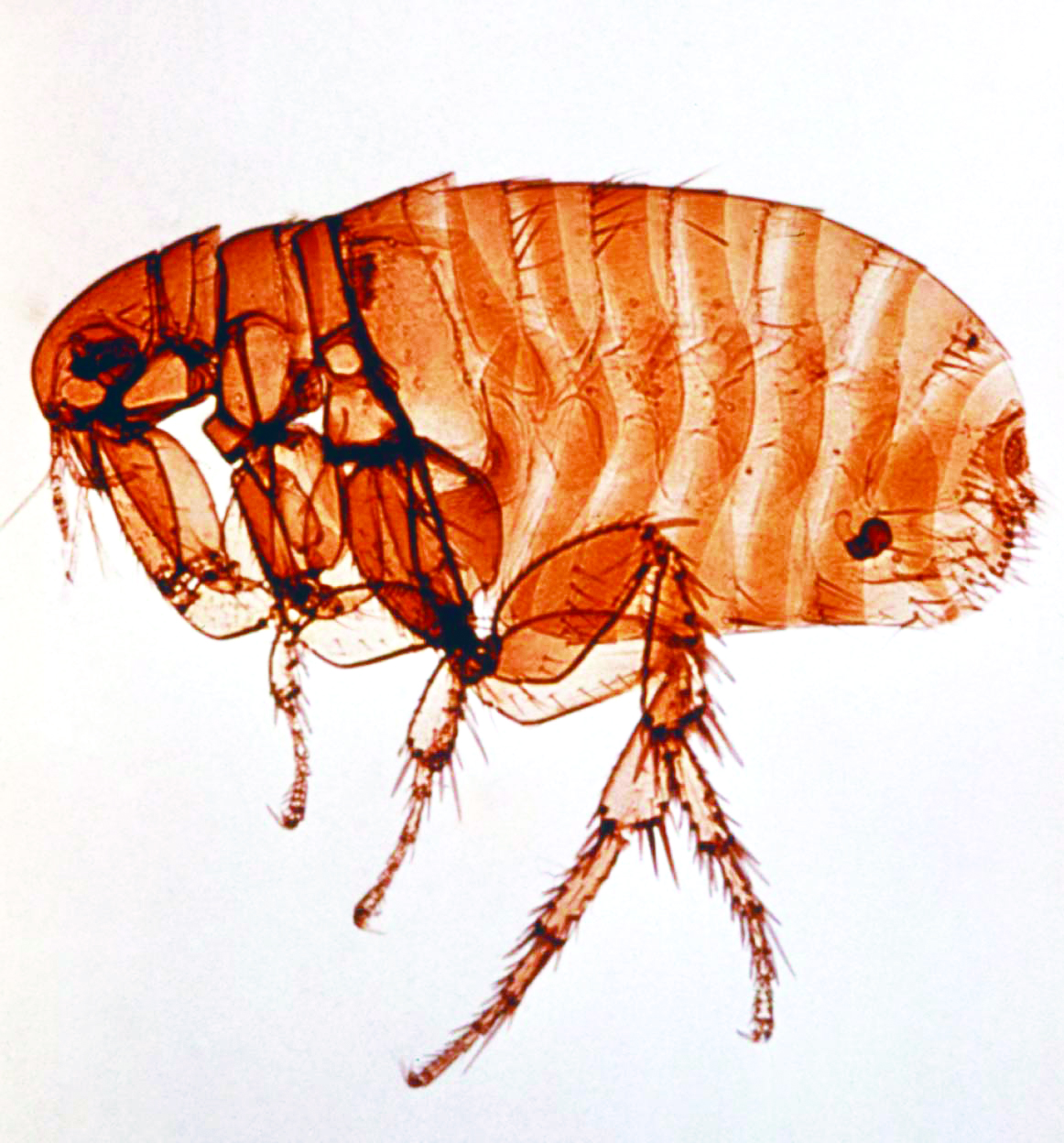Fleas
Fleas are wingless
insects (1/16 to 1/8-inch (1.5 to 3.3 mm) long) that are agile, usually
dark colored (for example, the reddish-brown of the cat flea), with tube-like
mouth-parts adapted to feeding on the blood of their hosts. Their legs are
long, the hind pair well adapted for jumping: a flea can jump vertically up to
7 inches (18 cm) and horizontally up to 13 inches (33 cm), making
the flea one of the best jumpers of all known animals (relative to body size),
second only to the froghopper. According to an article in Science
News, "researchers with the University of Cambridge in England have
shown that fleas take off from their tibiae and tarsi the insect equivalent of
feet and not their trochantera, or knees. The researchers report their
conclusion in the March 1 Journal of Experimental Biology.” It has been known
that fleas do not use muscle power but energy stored in a protein named resilin
but the researchers used high-speed video technology and mathematical models to
discover where the spring action actually happens. Their bodies are laterally
compressed, permitting easy movement through the hairs or feathers on the
host's body (or in the case of humans, under clothing). The flea body is hard,
polished, and covered with many hairs and short spines directed backward .which
also assist its movements on the host. The tough body is able to withstand
great pressure, likely an adaptation to survive attempts to eliminate them by
mashing or scratching. Even hard squeezing between the fingers is normally
insufficient to kill a flea. It is possible to eliminate them by pressing individual
fleas with adhesive tape or softened beeswax (or "cheese" wax) or by
rolling a flea briskly between the fingers to disable it then crushing it
between the fingernails. Fleas also can be drowned in soapy water.
Fleas lay tiny
white oval-shaped eggs better viewed through a loupe. The larva is small,
pale, has bristles covering its worm-like body, lacks eyes, and has mouthparts
adapted to chewing. The larvae feed on various organic matter, especially the
feces of mature fleas. The adult flea's diet consists solely of fresh blood. In
the pupa phase, the larva is enclosed in a silken, debris-covered cocoon.
















No comments:
Post a Comment